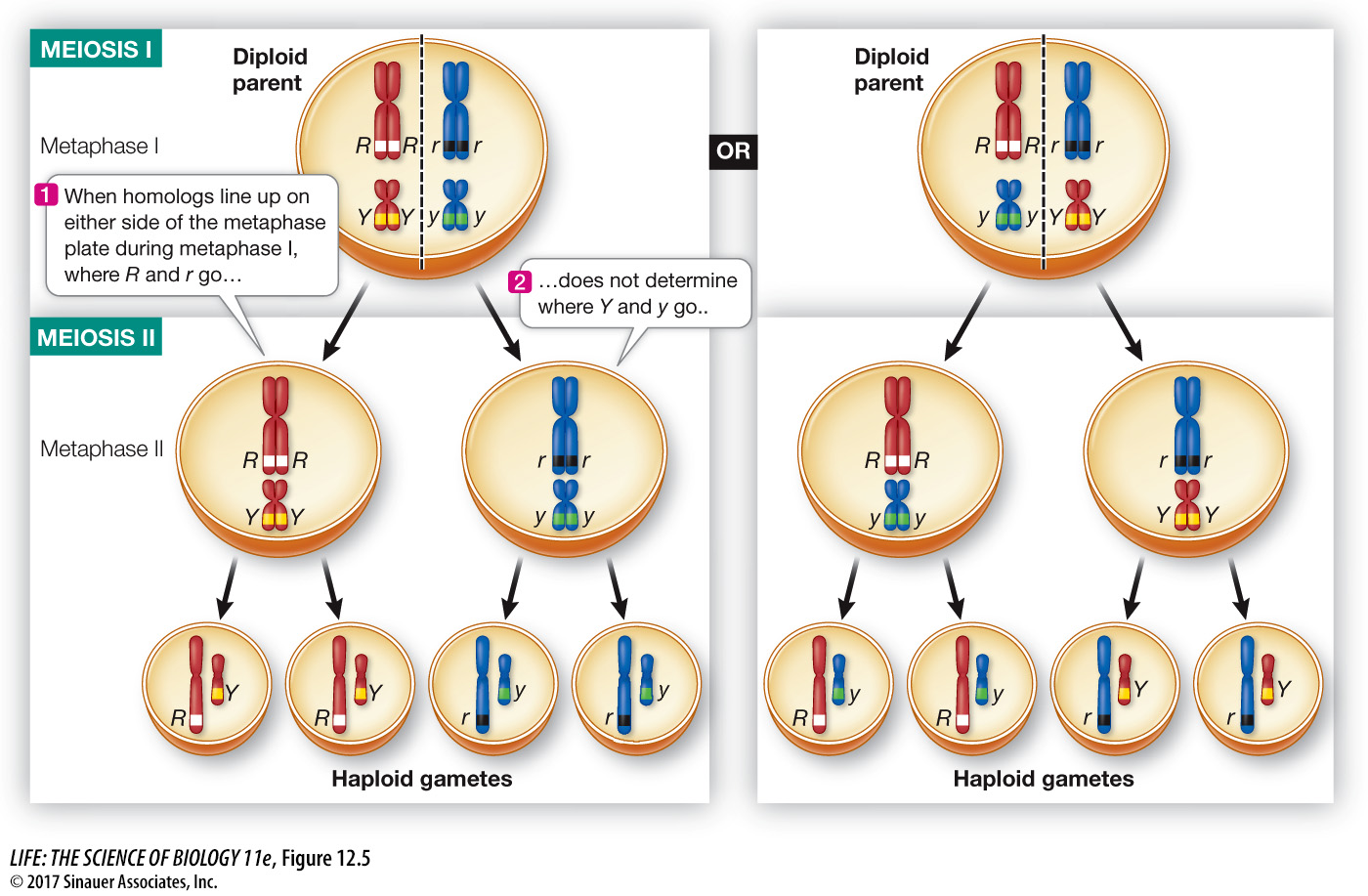Mendel’s second law states that copies of different genes assort independently
Now let’s consider inheritance patterns involving two different genes. Consider an organism that is heterozygous for genes for seed color (yellow or green) and seed shape (round or wrinkled). In our example, the dominant R and Y alleles came from one parent, and the recessive r and y alleles came from the other parent. When this organism produces gametes, do the R and Y alleles always go together in one gamete, and the r and y alleles in another? Or can a single gamete receive one recessive and one dominant allele (R and y or r and Y)?
Mendel performed another series of experiments to answer these questions. He began with peas that differed in two characters: seed shape and seed color. One parental variety produced only round, yellow seeds (RRYY), and the other produced only wrinkled, green ones (rryy). A cross between these two varieties produced an F1 generation in which all the plants were RrYy. Because the R and Y alleles were dominant, the F1 seeds were all round and yellow.
Mendel continued this experiment into the F2 generation by performing a dihybrid cross—a cross between individuals that are identical double heterozygotes. In this case, he simply allowed the F1 plants, which were all double heterozygotes, to self-
The alleles could maintain the associations they had in the parental generation. If this were the case, the F1 plants would produce two types of gametes (RY and ry). The F2 progeny resulting from self-
pollination of these F1 plants would consist of two phenotypes: round yellow and wrinkled green in the ratio of 3:1, just as in the monohybrid cross. Page 247The segregation of R from r could be independent of the segregation of Y from y—
the two genes could be unlinked . In this case, four kinds of gametes would be produced in equal numbers: RY, Ry, rY, and ry. When these gametes combine at random, they should produce an F2 generation with four phenotypes (round yellow, round green, wrinkled yellow, wrinkled green). Putting these possibilities into a Punnett square, we can predict that these four phenotypes would occur in a ratio of 9:3:3:1.
The results supported the second prediction: four different phenotypes appeared in the F2 generation in a ratio of about 9:3:3:1 (Figure 12.4). On the basis of such experiments, Mendel proposed his second law—

focus: key figure

Q: A diploid heterozygote with a single gene can produce haploid gametes of only two genetically distinct types. A heterozygote with two genes can produce four genetically distinct types of gametes, as illustrated here. How many genetically distinct gametes could be produced by a heterozygote with four genes assorting independently? (Answer this without drawing a diagram!)
NEED Answer for Question in Figure 12.5.
Animation 12.1 Independent Assortment of Alleles
Media Clip 12.1 Mendel’s Discoveries